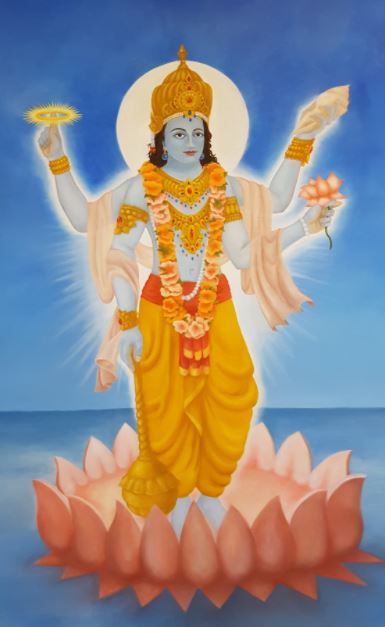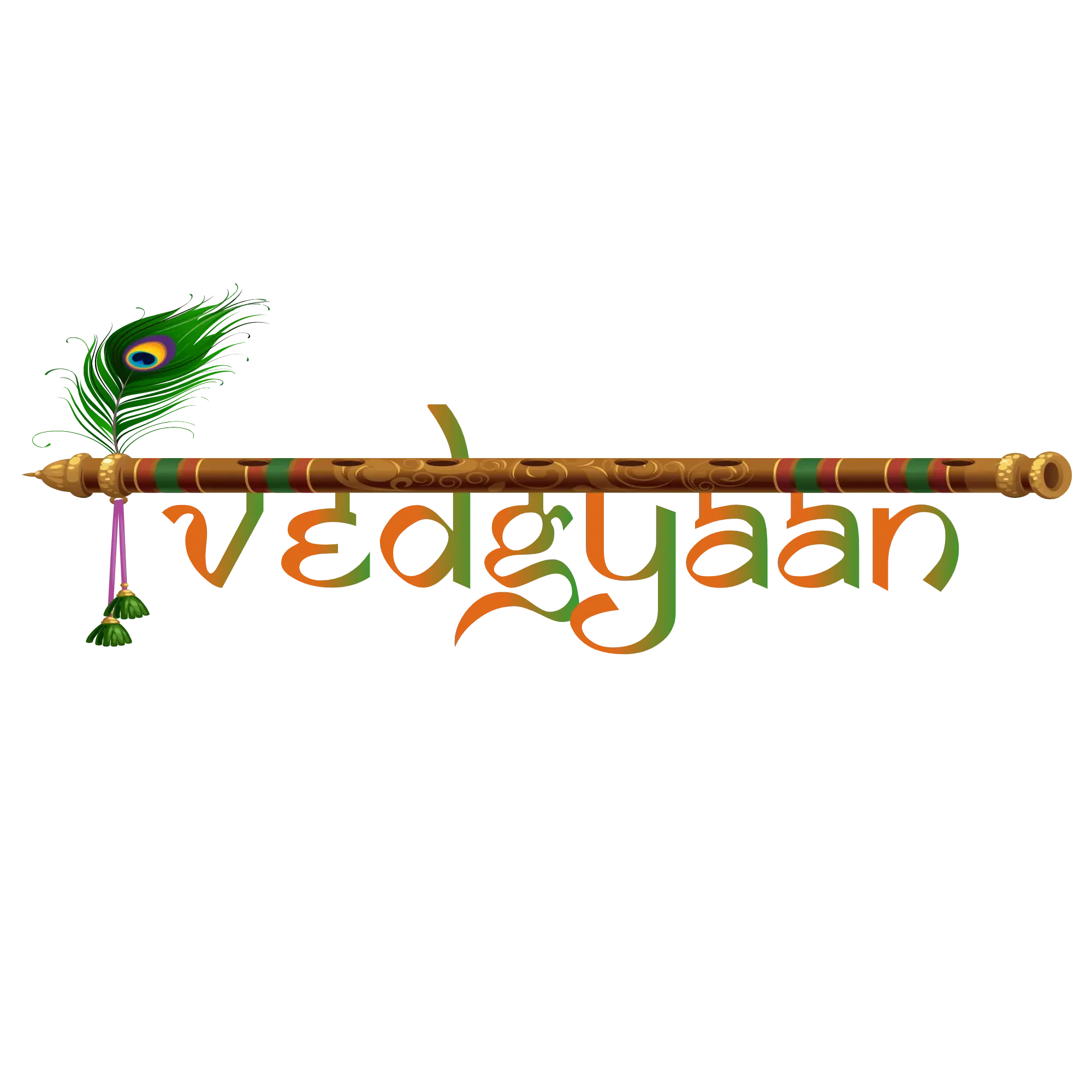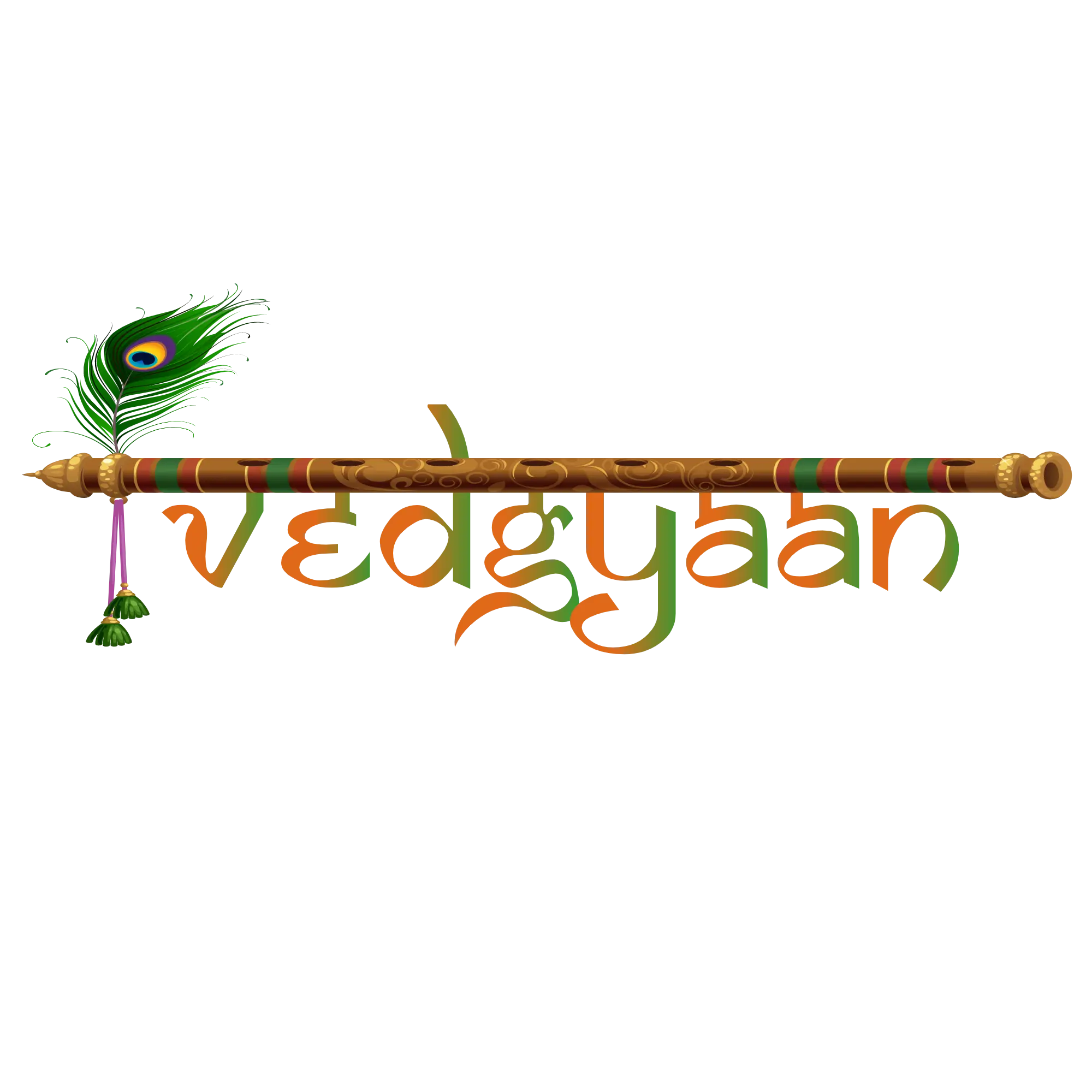Lord Vishnu, the Preserver of life, and the Ruler of Vaikuntam is like the sun that illuminates the darkness and brings light to the world. He is a part of the Hindu Trinity, which comprises of Lord Brahma, the creator, Lord Vishnu, the preserver, and Lord Shiva, the destroyer.
The role of Lord Vishnu is to maintain balance and order in the world, and to preserve Dharma, the principle of righteousness. He is said to appear on earth in the form of different avatars to deliver justice and to preserve Dharma. It is believed that during each Yuga, Lord Vishnu appears in different forms and is worshipped in different ways.

(Public Domain)
Vishnu in Satya Yuga
During the first age or the Satya Yuga, Lord Vishnu was depicted as a white color God, four-armed and dressed by the barks of trees. Humanity had the best to offer – Dharmic, devoted, and undyingly loyal devotees. In this form, Lord Vishnu was popularly known as Hamsa, Vaikuntha, or Dharma.
Lord Vishnu’s first four avatars – Matsya (the fish), Kurma (the tortoise), Varaha (the boar), and Narasimha (the lion) – appeared in the Satya Yuga to preserve Dharma on earth.
Vishnu in Treta Yuga
During the Treta Yuga, Lord Vishnu was portrayed as a red, four-armed God with flowing golden hair. Enlightened by the knowledge of the Vedas, Humanity in the Treta Yuga used to praise Lord Vishnu through ancient Vedic hymns.
Lord Vishnu manifested as three avatars during the Treta Yuga – Vamana (The dwarf), Parashurama (warrior), and Rama (who appeared on earth to rid the world of the evil demon king of Lanka, Ravana).
Vishnu in Dwapara Yuga
In the Dvapara Yuga, Lord Vishnu was a green-skinned, silk-adorned God, carrying a mace, conch, and discus in his arms. In this Yuga, Lord Vishnu was worshipped as Visveswara, Visvaroopa, and Vasudeva.
In this Yuga, Lord Vishnu manifested as the brothers – Balarama and Krishna. Lord Krishna’s arrival on earth signaled the end of the Dvapara Yuga and the beginning of the Kali Yuga.
Vishnu in Kali Yuga
In the Kali Yuga, Vishnu is a black-skinned, four-armed God. Devotees worship Vishnu to attain Moksha.
It is believed that towards the end of the Kali Yuga, Lord Vishnu will return to earth as his tenth manifestation riding on a majestic white stallion – Kalki. The appearance of Kalki on earth is said to symbolize the end of the Kali Yuga and the destruction of the Universe.
Conclusion
Lord Vishnu plays a crucial role in preserving Dharma and bringing balance to the world during different yugas in Hinduism. The Satya Yuga, Treta Yuga, Dvapara Yuga, and Kali Yuga are all different ages with different characteristics, and Lord Vishnu appears in different forms in each one. Lord Vishnu’s first four avatars, Matsya, Kurma, Varaha, and Narasimha, appeared in the Satya Yuga, three avatars, Vamana, Parashurama, and Rama, appeared in the Treta Yuga, and two avatars, Balarama and Krishna, appeared in the Dvapara Yuga. In the Kali Yuga, Lord Vishnu is worshipped in a way that helps to attain Moksha. It is believed that Lord Vishnu will return to earth in the form of Kalki, at the end of the Kali Yuga, bringing an end to the universe. Thus Lord Vishnu’s role is vital in maintaining balance and order in the world, and his avatars are not just for the preservation of Dharma but also for the guidance and protection of humanity.





